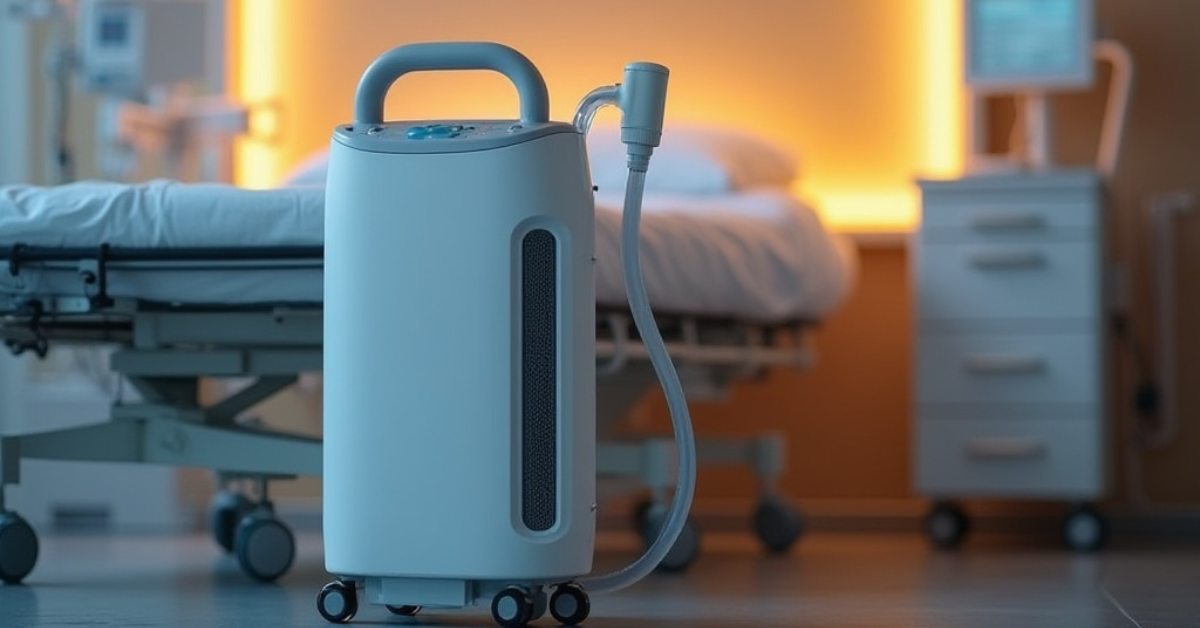Medical-Grade Air Purifier: Why It’s Crucial in the Healthcare Sector

In our fast-paced lives, we often overlook the very air we breathe. Indoor air pollution, though invisible, plays a major role in affecting our well-being, especially in critical environments like hospitals and clinics. While masks and social distancing help limit viral spread, can an air purification system take protection to the next level?
This blog explores the significance of a medical-grade air purifier, how it works, and why it’s essential for maintaining a safe and hygienic atmosphere in healthcare facilities.
How Does a Medical-Grade Air Purifier Work?
A medical-grade air purifier primarily uses High-Efficiency Particulate Air (HEPA) filters. These are thick, pleated filters that trap 99.97% of airborne particles larger than 0.3 microns. The filtration process involves:
- Diffusion: Particles below 0.1 microns collide with air molecules and are captured by the filter.
- Interception: Medium-sized particles stick to the fibres of the HEPA filter.
- Impaction: Larger particles get trapped directly into the filter material.
Some advanced purifiers also include UV-C light or activated carbon layers for killing bacteria and removing odours or volatile organic compounds (VOCs).
Why Is Indoor Air Quality Worse in a Hospital?
You might think hospitals are among the cleanest places. Ironically, they’re hotspots for indoor air pollution due to:
- Patients emitting infectious particles through coughing or sneezing
- Poor ventilation in older infrastructure
- Use of VOC-emitting chemicals for cleaning and disinfecting
High-risk zones include:
- Operation theatres
- Waiting areas
- Emergency rooms
- Intensive Care Units (ICUs)
- Microbiology labs
These areas accumulate airborne pathogens and toxins, increasing the risk for patients, visitors, and healthcare workers.
Air Purification in Clinics and Hospitals
Installing a medical-grade air purifier in healthcare facilities can drastically reduce airborne contaminants. These purifiers help by:
- Filtering particles and allergens
- Neutralising bacteria and viruses
- Minimising odour and chemical gases
- Preventing cross-contamination between patients
Air purifiers with multi-stage filtration systems (HEPA + activated carbon + UV) are especially effective for medical-grade environments.
Importance of Medical-Grade Air Purifiers
1. Compact and Lightweight
Modern air purifiers are designed to be efficient yet compact. They fit seamlessly into healthcare spaces without being intrusive.
2. Stops Airborne Infections
HEPA filters can trap airborne viruses like flu and cold, preventing them from circulating and spreading among patients and staff.
3. Reduces VOCs (Volatile Organic Compounds)
Hospital-grade purifiers with activated carbon filters can remove VOCs from:
- Disinfectants
- Cleaning agents
- Sterilization products
This reduces the chemical load on lungs and prevents respiratory issues.
4. Continuous Operation
Unlike masks, which are passive barriers, air purifiers work 24/7 to maintain air quality, especially important in closed or high-traffic areas.
Types of Medical-Grade Air Purifiers
ntry-Level / Affordable
- Portable and wall-mounted
- Ideal for small spaces
- Typically use HEPA filters
- Best suited for hallways or waiting areas
✅ Mid-Tier
- Cover 700–900 sq ft
- Use HEPA + activated carbon/zeolite layers
- Quiet operation
- Suitable for patient rooms and labs
✅ High-End / Premium
- Cover over 1000 sq ft
- Designed for ICU and surgical theatres
- Trap ultra-fine particles and allergens
- Ideal for allergy and asthma patients
Conclusion
Poor indoor air quality in hospitals is a silent but severe health risk. From bacteria to chemical pollutants, contaminants can easily compromise a patient’s recovery and staff safety. Installing a medical-grade air purifier is one of the simplest, most effective ways to address this issue.
By using high-efficiency filters, UV sterilisation, and activated carbon layers, these purifiers provide a much-needed layer of defence in any medical facility. As healthcare continues to evolve post-pandemic, clean indoor air is not just a luxury—it’s a necessity.












